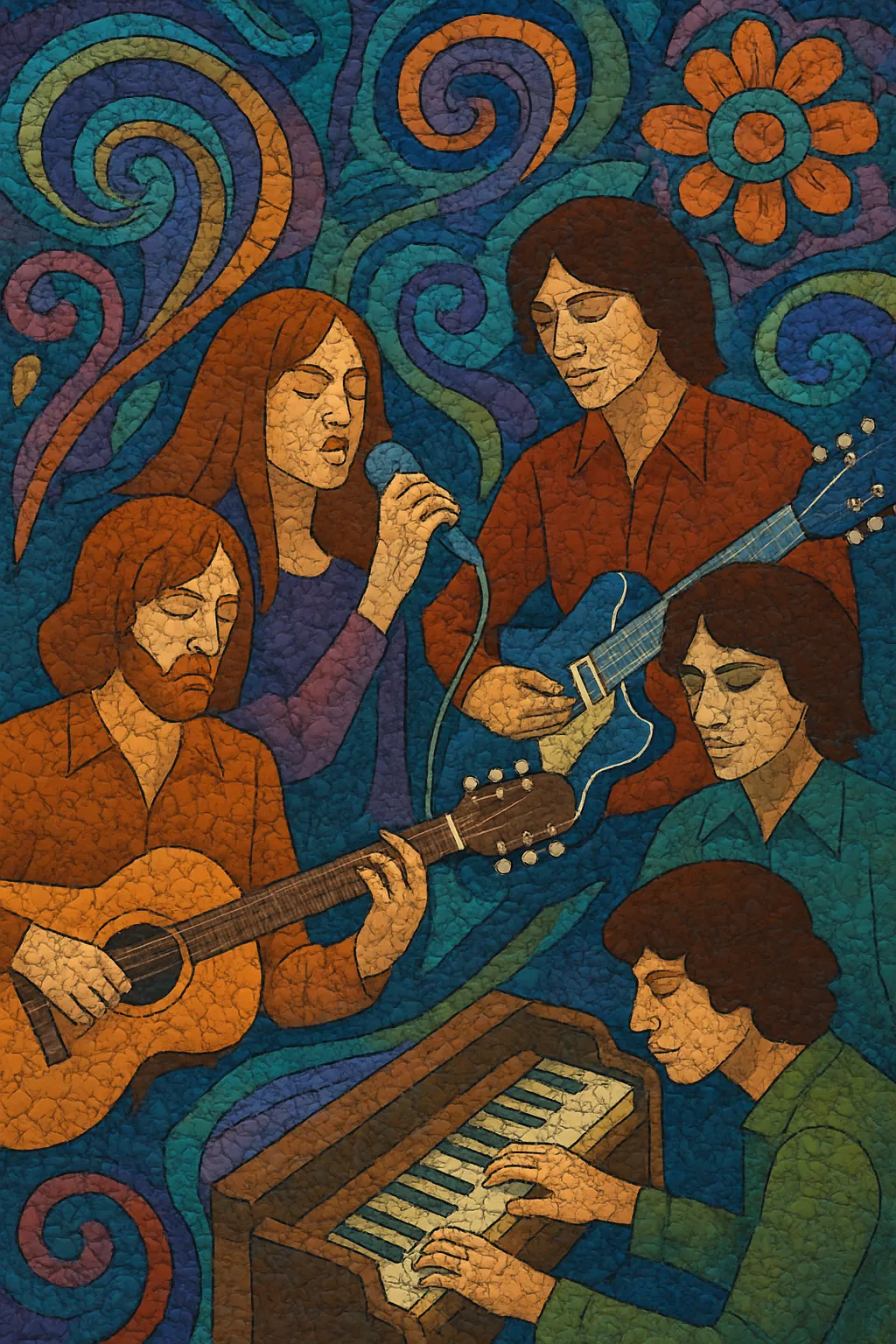
Paisley underground is a Los Angeles–centered 1980s revival of 1960s psychedelic and folk-rock aesthetics, characterized by chiming 12‑string guitars, close vocal harmonies, vintage organ tones, and a DIY club-scene ethos.
Bands blended the jangle and melodic economy of power pop with the haze and drone of psychedelic rock, often adding country‑rock twang or garage grit. The sound is at once nostalgic and forward‑looking: bright, hooky songs cloaked in kaleidoscopic textures, reverb‑kissed atmospheres, and impressionistic lyrics.
The term “paisley underground” was coined by Michael Quercio (The Three O’Clock) and soon came to describe a loose Los Angeles scene of bands looking back to the 1960s. Drawing on The Byrds, Love, Buffalo Springfield, The Beatles, and West Coast garage-psych, these groups fused jangling guitars, harmonies, and colorful, psychedelic aesthetics with punk/new‑wave DIY energy.
Key clubs like The Anti‑Club, Club Lingerie, and Madame Wong’s incubated a community whose members frequently collaborated. Cornerstone releases arrived in rapid succession: The Dream Syndicate’s "The Days of Wine and Roses" (1982), Rain Parade’s "Emergency Third Rail Power Trip" (1983), The Three O’Clock’s "Sixteen Tambourines" (1983), The Bangles’ "All Over the Place" (1984), The Long Ryders’ "Native Sons" (1984), and Green on Red’s "Gas Food Lodging" (1985). The Rainy Day project (1984)—a supergroup covering 1960s songs—crystallized the scene’s reverence for its forebears.
The Bangles broke through commercially mid‑decade, carrying some of the scene’s jangle into pop charts, while others gravitated toward darker desert‑rock (Green on Red) or country‑rock (The Long Ryders). David Roback’s path from Rain Parade to Opal (with Kendra Smith) prefigured the languid psych‑dream aura later associated with Mazzy Star, showing how paisley textures could drift into dreamier territories.
Though the scene waned by the late 1980s, its DNA spread widely: alternative and indie rock embraced 1960s‑inflected songwriting and guitar chime; neo‑psychedelia and garage‑rock revivalists adopted its analog warmth and retro gear; and alt‑country drew on its Byrdsian blend of twang and jangle. Today, “paisley underground” tags a sound, a sensibility, and a collaborative spirit that keeps echoing through indie and psych‑leaning guitar music.

